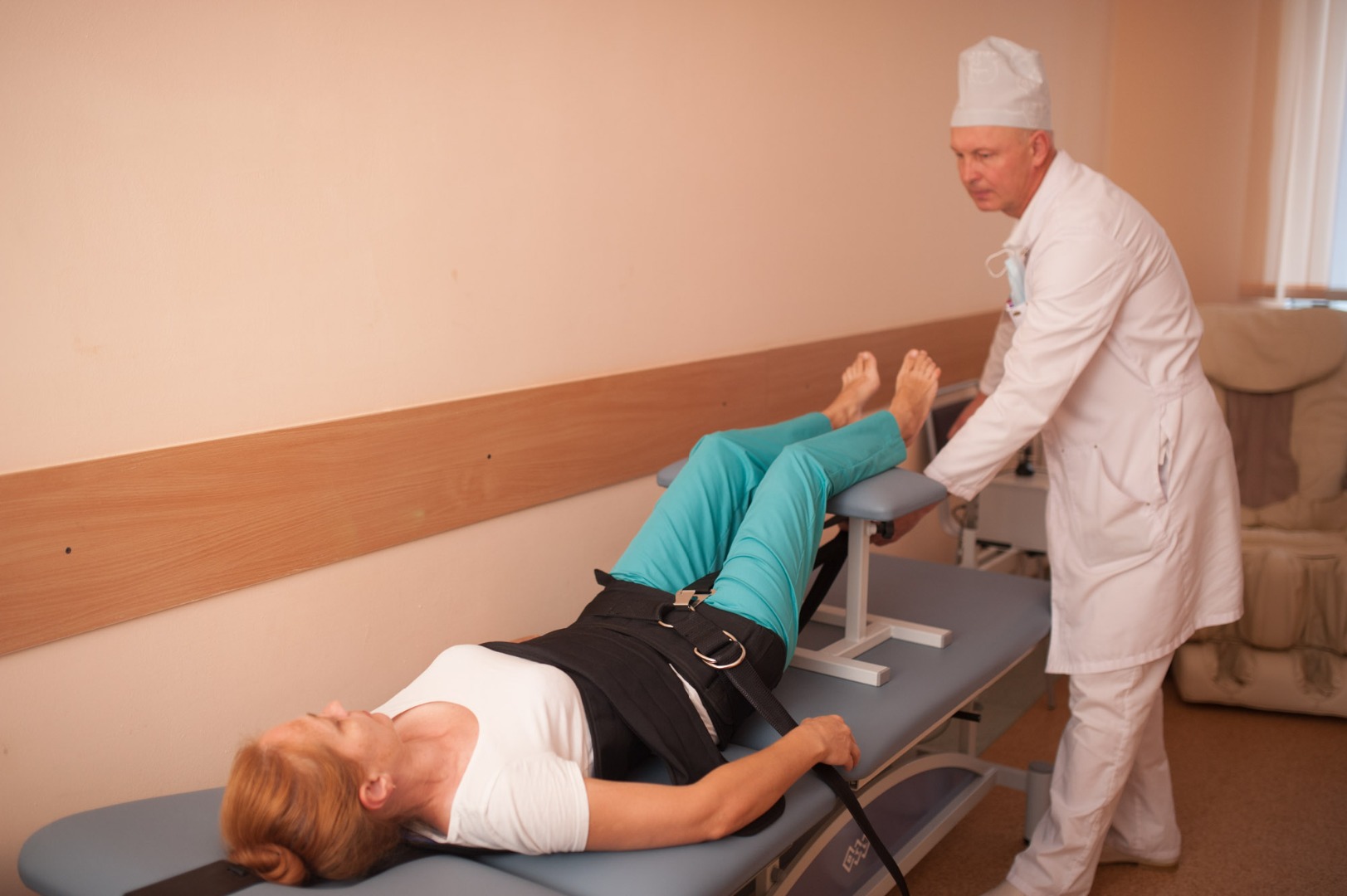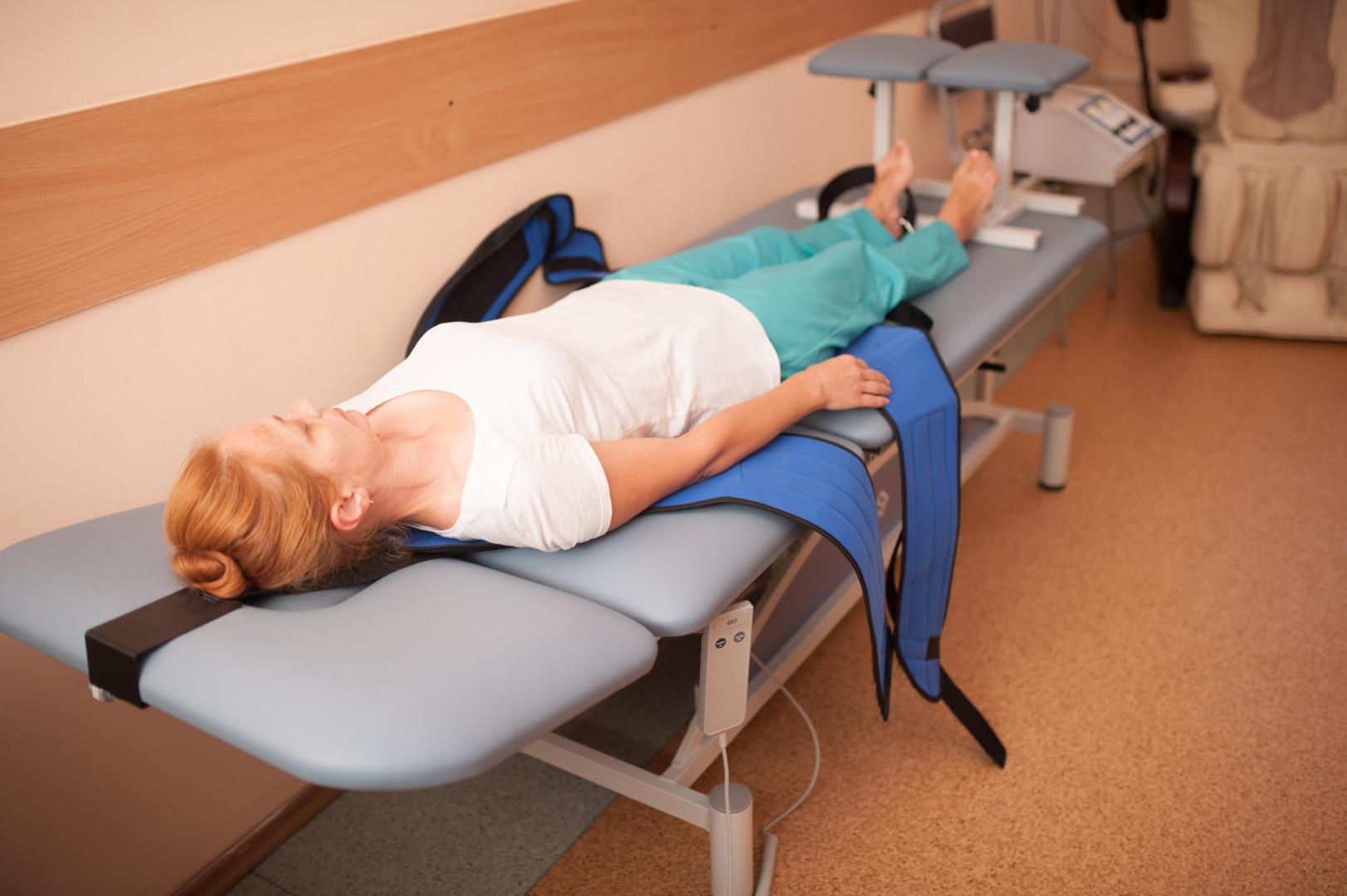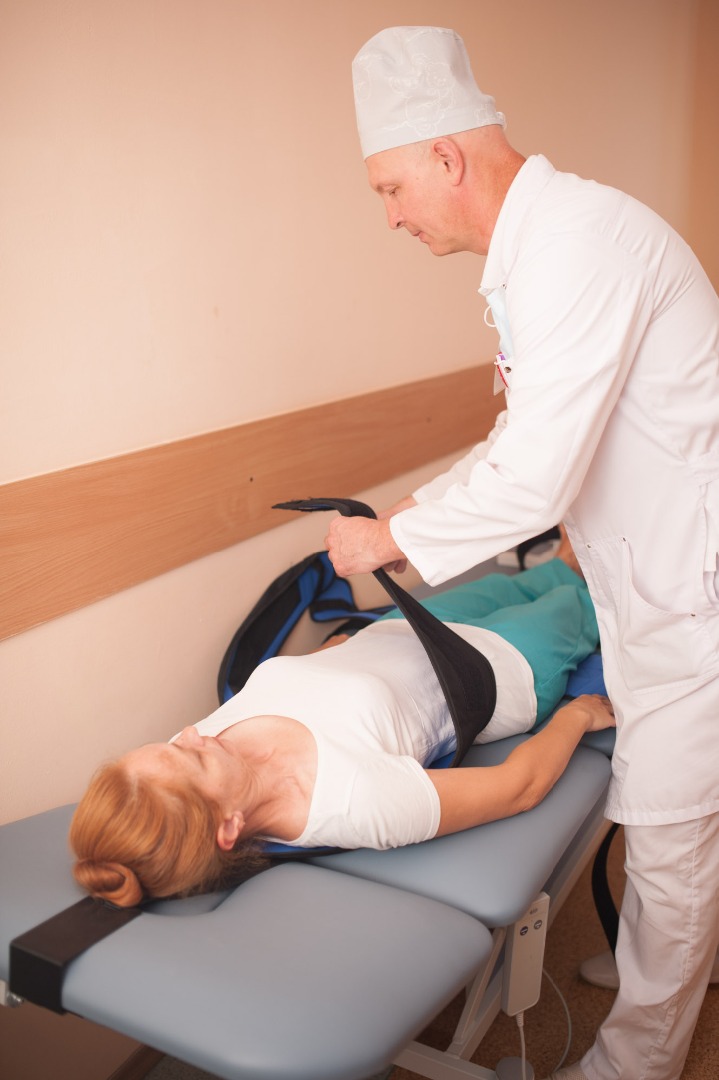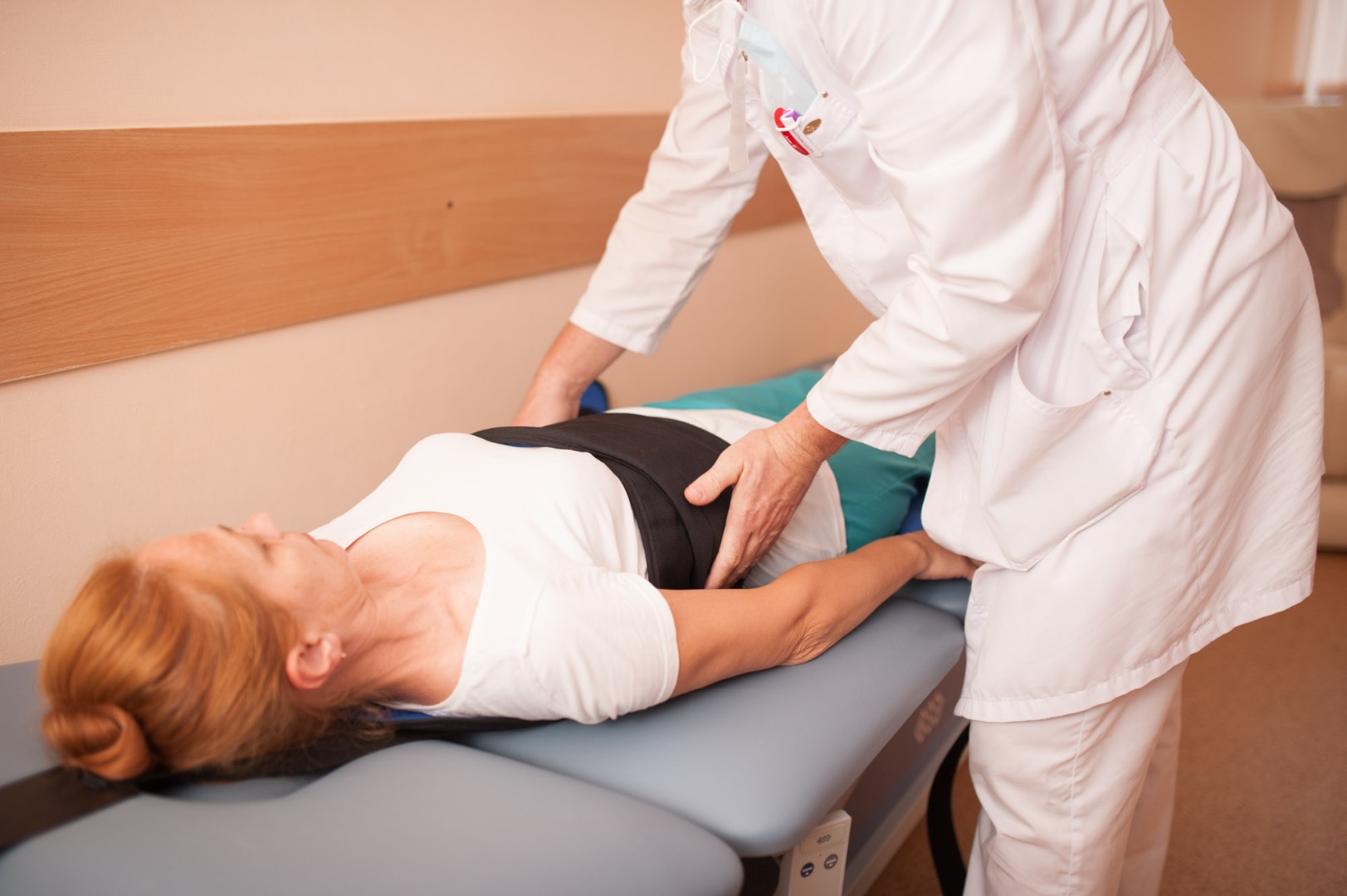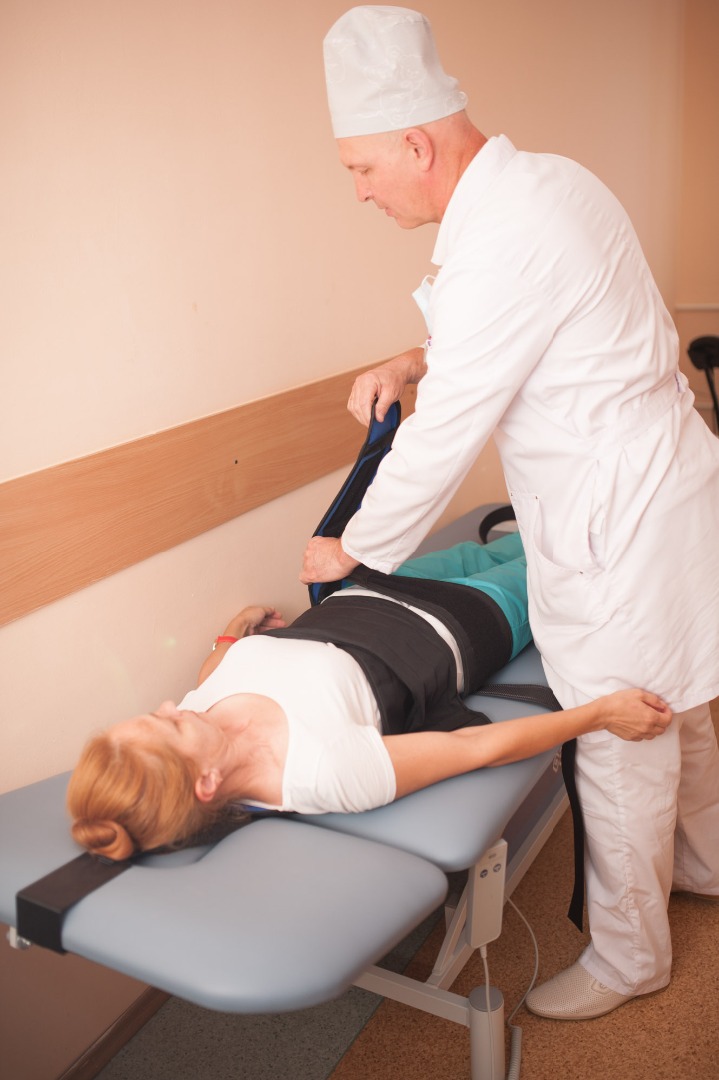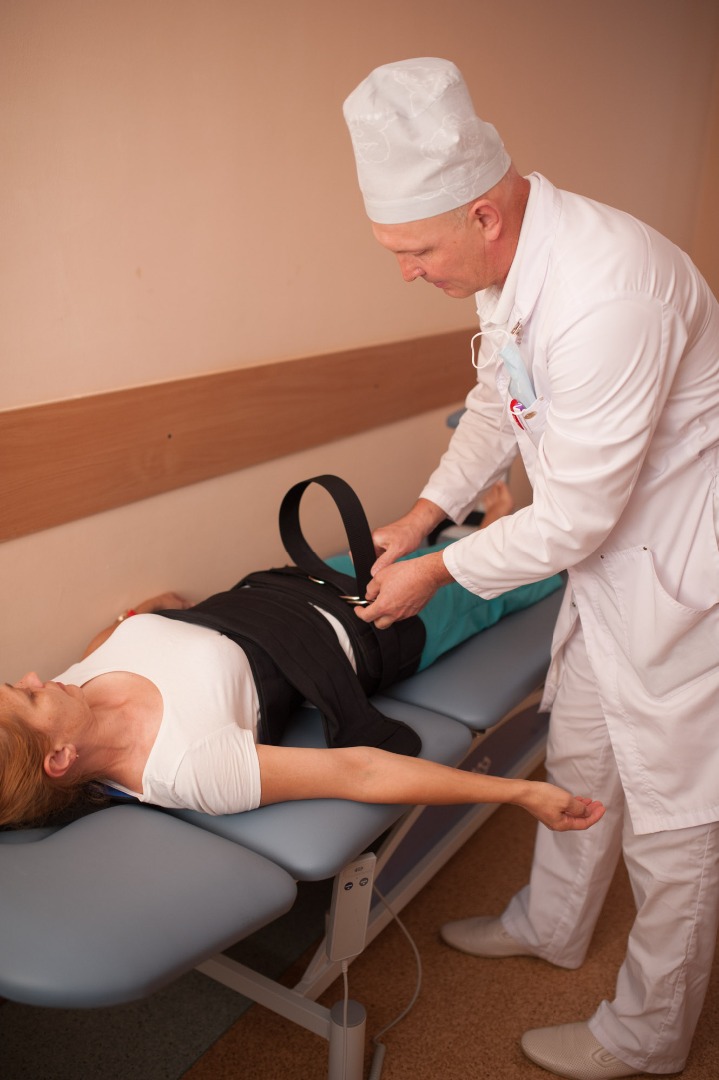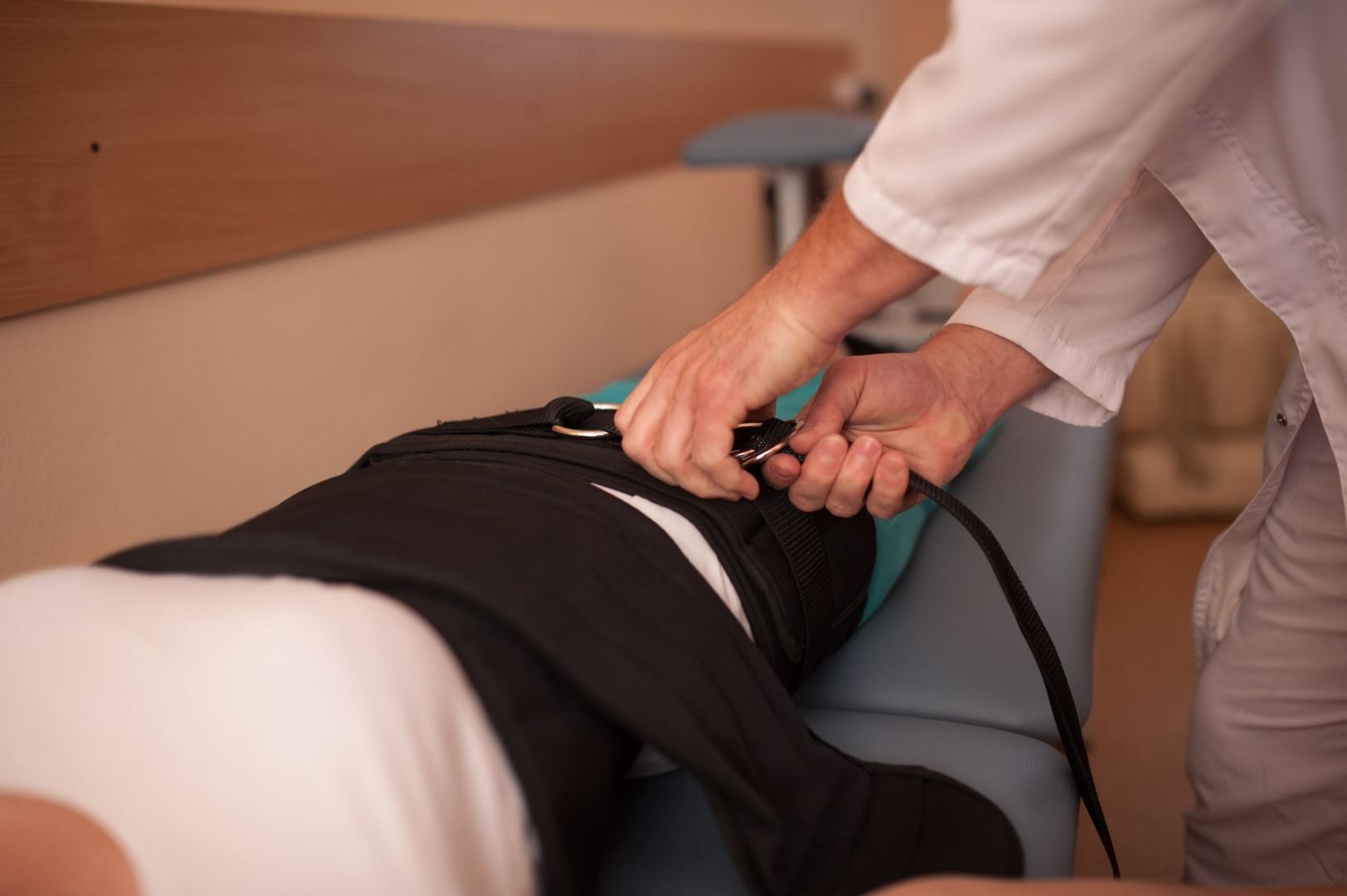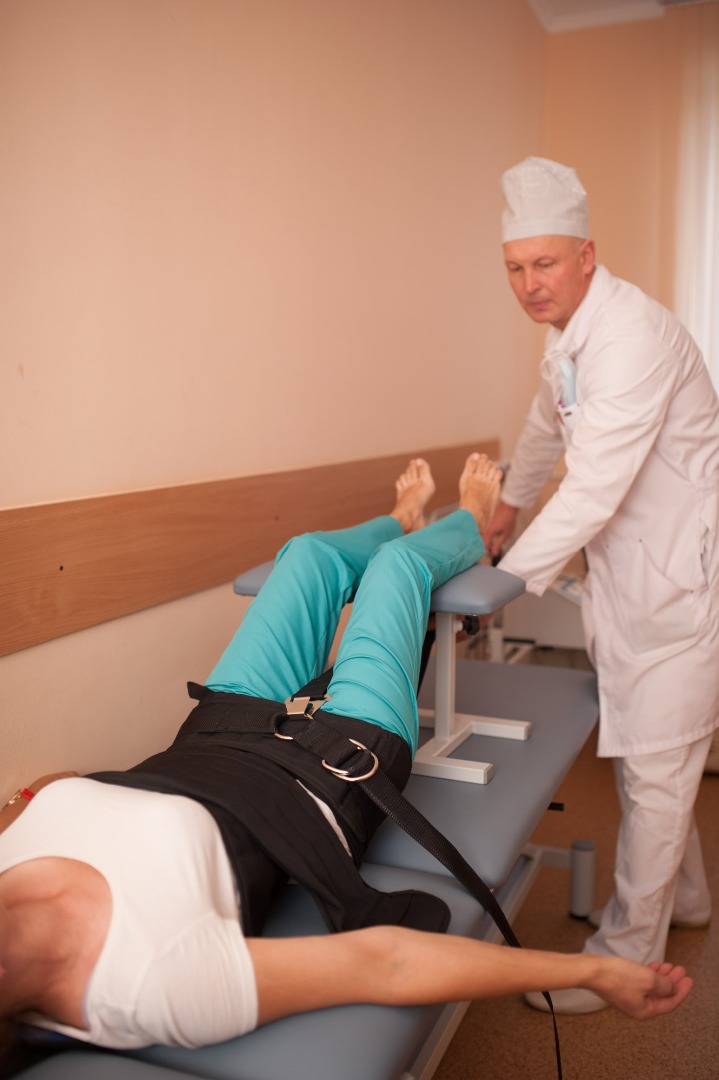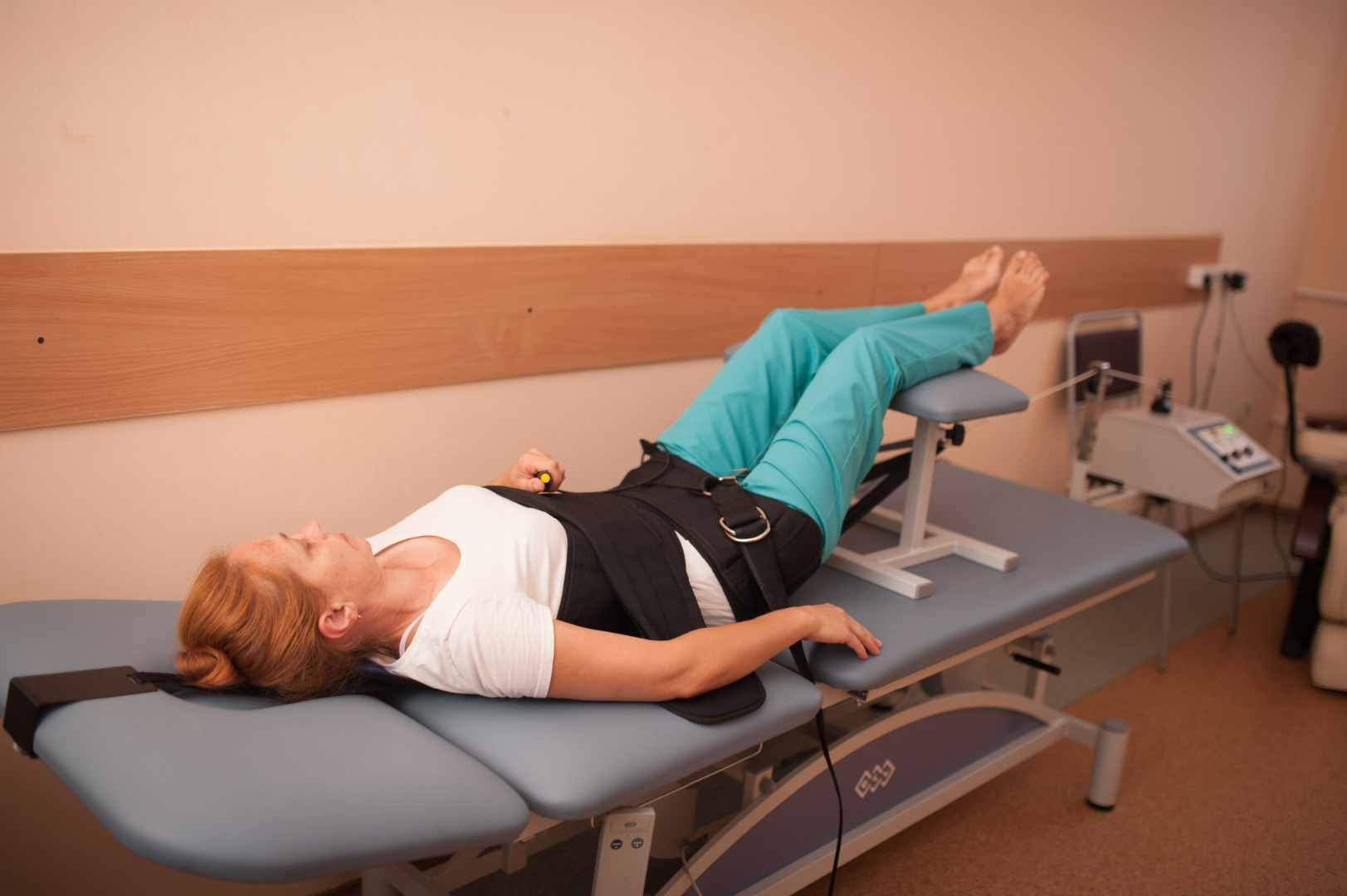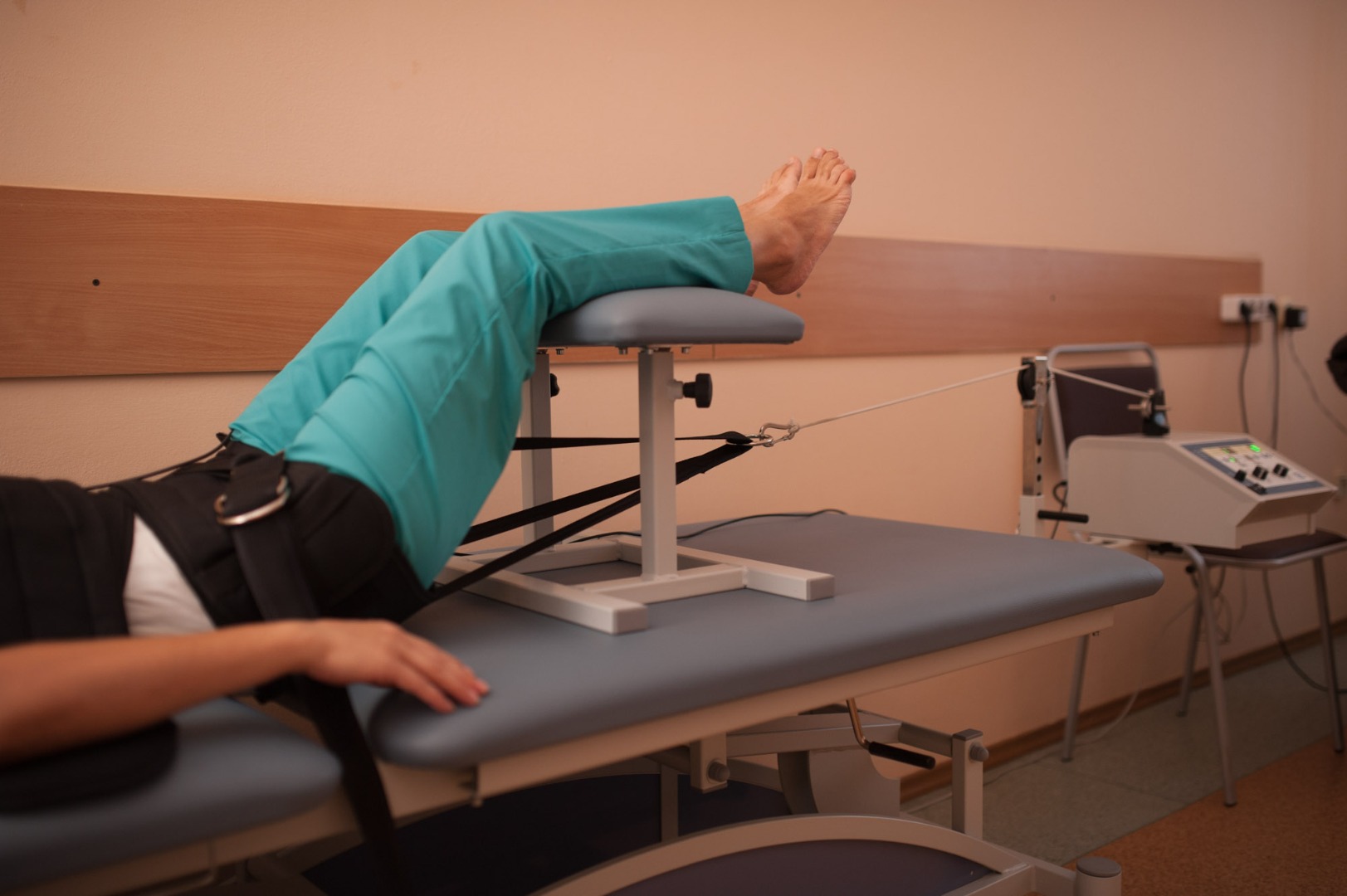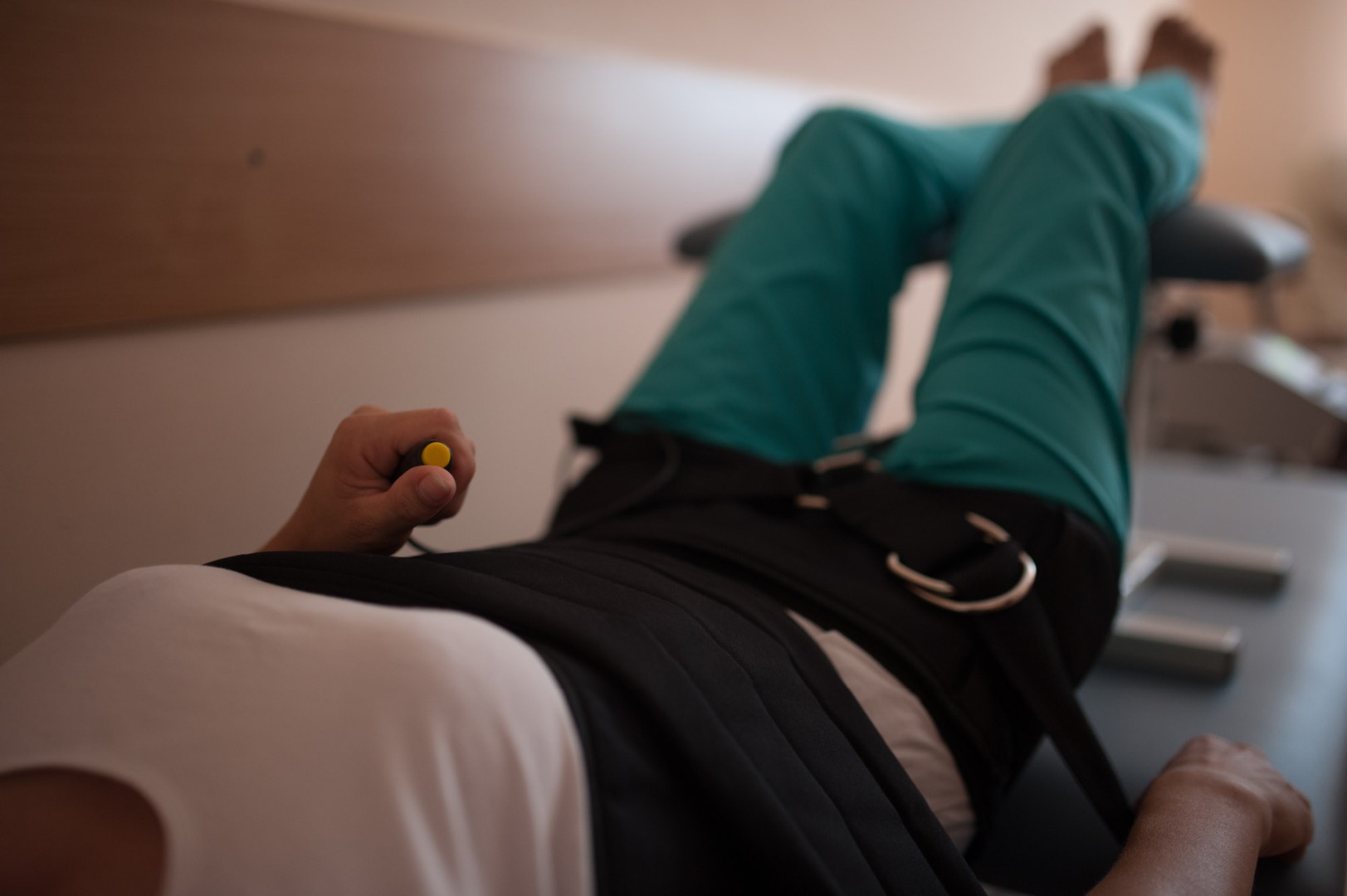Traction therapy (spinal traction) is a therapeutic effect on the tissues of the body using metered traction; one of the main components of the treatment of most diseases of the spine, including osteochondrosis, scoliosis, intervertebral hernia.
The feasibility of extension of the spine with vertebral diseases of the nervous system at the present time no one doubts does not cause.
In the sanatorium "Yaselda" for traction therapy of the spine (cervical traction and lumbar spine) is used the apparatus for traction therapy ВТL-16 Plus (UK production).
Apparatus traction therapy ВТL-16 Plus allows you to accurately and easily measure the force and duration of traction can produce traction in pulsed or continuous modes.
Effects
Traction treatment is aimed at removal of muscle spasm, reduction of intra disk pressure, reduction of the disc herniation, the elimination of pathological pain impulses from the spinal-motor segment.
Numerous studies have shown that its therapeutic effects (analgesic, antispasmodic, corrective) is mainly due to five factors:
- the increasing distance between the vertebrae
- a decrease in intra disk pressure
- removal of pathogenic myopically
- increase the vertical size of the intervertebral foramen
- the elimination of functional blockages intervertebral joints.
In result dosed traction of the spine restores the mobility of the vertebral motor segments, relaxes muscles, is reduced (or eliminated) compression of a nerve root, radicular-spinal arteries and veins of the dural SAC, reduces the degree of bulging of the disc.
Testimony
Various reflex manifestations of spinal osteochondrosis (neurodistrophicale, musculo-tonic, vegetative-vascular), in the stages of subacute and chronic pain, rehabilitation after exacerbations prevention of exacerbations of chronic process.
Compression radicular syndrome with moderate-to-severe pain.
Contraindications
Contraindications common:
- Coronary heart disease, angina of rest and stress, functional class greater than 3 degree, the presence of circulatory failure 2A higher degree, decompensated cardiac arrhythmias.
- Arterial hypertension stage 3, and cerebral arteriosclerosis with evidence of cerebrovascular disease.
- Acute cerebral and spinal blood circulation.
- Infectious diseases in acute and subacute stage.
- Mental illness in the period of exacerbation.
- The General severe condition of the patient.
- Acute traumatic injuries of the spine, intervertebral joints and soft tissues.
- Pregnancy.
Contraindications to traction, in addition to the General contraindications:
- The acute stage of vertebrogenic diseases
- Signs of caudate and myelopathy.
- Instability of the vertebrae above the 3rd degree in the lumbar, 1-St degree in the cervical spine
- Inflammatory diseases of the spinal cord, meninges and surrounding soft tissues
- Systemic lesions of bone (multiple myeloma, hyperparathyroid osteodystrophy, osteoporosis)
- Spondylosis deformans in the presence of spayaniya bone (osteophytes) of the impact zone
- Primary and secondary tumors of the spine
- Spinal stenosis
- Dysplastic and structural scoliosis
- Hypersensitivity traction, or the emergence of negative symptoms in a trial of traction
- Metacrisis wounds, ulcers at the place of overlay cuff

